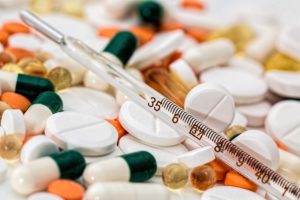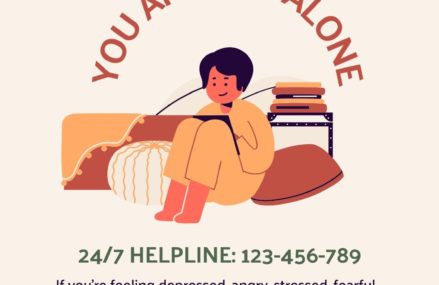Fighting to understand Crohn’s disease and my progress.

I wonder how long these emotions that I’ve been going through are going to last. How long is my Crohn’s disease life expectancy? I’m pretty much just a diseased human now, right? What’s the point of eating if all it does is hurt? When in the heck can I expect my first surgery?
Yeah, the questions are never-ending and it’s only been 5 days into my official diagnosis and it’s safe to say I’m learning a lot about Crohn’s disease. The disease hasn’t failed to mess with my emotions, physical appearance and of course family and friends in my life. Crohn’s disease is my new normal and (while I still haven’t accepted it) I have to learn to live with possible flares, pain and medicine.
I do know one thing about Crohn’s disease, it’s not getting enough attention. I truly wish that The Crohn’s and Colitis foundation will continue to receive donations to further the studying on Crohn’s because it’s a pain in the butt (pun intended).
Crohn’s and Colitis are diseases that deserve more attention because it’s often misdiagnosed as IBS, IBS-D, IBS-C and even anxiety. These disease are both chronic and the longer a disease is delayed the worse it can become and the harder it is to achieve remission.
What are the symptoms of Crohn’s disease?
The symptoms of Crohn’s disease didn’t manifest in a particular order and that’s reported to be normal.
“The symptoms of Crohn’s disease can manifest different for each person but Hopkins Medicine has one of the best answers (I’ve read) regarding symptoms of Crohn’s disease and when you should be evaluated by your provider. They wrote:
Crohn’s disease usually begins in the teens and twenties; however, ones-sixth of patients present before age 15. More than 90% of patients have symptoms before the age of 40. Patients most often present with abdominal cramps, diarrhea, delayed growth (in prepubescent patients), weight loss, fever, anemia, a right lower quadrant abdominal mass (if a complication has developed in the ileal area), or perianal fistula. Typically, patients with ileitis or ileocolitis have an insidious onset and a long course before they receive a specific diagnosis. The average duration of symptoms before diagnosis and initiation of therapy used to be 2–2 ½ years, but this lag time has been shortened with better imaging techniques such as ultrasonography and computed tomography (CT), and a higher index of suspicion for Crohn’s
Disease.Crohn’s disease can have several patterns of involvement: jejunoileitis, ileitis, ileocolitis and colitis. Each subtype has a distinct clinical presentation and typical course. Patients with inflammation of the jejunum and ileum often present with cramping abdominal pain after meals and eventually develop diarrhea. These patients, many of whom are teenagers or young adults, may have prominent extraintestinal manifestations including arthritis, fever, skin lesions, and delayed growth. Ileitis causes discomfort 1–2 hours after meals. Patients lose weight because they eat less to avoid discomfort. The inflammation in the ileum can extend transmurally into adjacent structures as tracks or fistulae, or can cause perforation of abscesses adjacent to the bowel. This form of Crohn’s disease is known as fistulizing or perforating. It has the worst prognosis of all the forms and often requires surgical resection after three or four years. Other patients with ileitis develop intestinal obstruction 8–10 years after the onset of disease because muscle hypertrophy and fibrosis narrow the lumen of the bowel. This form of Crohn’s disease is known as stricturing or stenosing. Crohn’s disease in the colon causes diarrhea and may be difficult to distinguish from ulcerative colitis.
The clinical picture of Crohn’s disease depends on the areas of the bowel that are involved. Patients with ileal involvement may notice a gradual decrease in their sense of well-being, with vague cramping abdominal pain 1–2 hours after meals. This discomfort, caused by partial obstruction and inflammation of the bowel lumen, may be localized to the periumbilical area, or more commonly, to the right lower quadrant. Because of anorexia, nausea, or the fear of abdominal cramps, patients eat less and invariably lose weight. Most patients with small-bowel Crohn’s disease have an increase in the number of bowel movements, although rarely more than five per day, with soft and unformed stools. About 80% of patients with ileal disease have diarrhea.
Crohn’s disease is associated with extraintestinal manifestations that may be more problematic than the bowel disease. Colitic arthritis is a migratory arthritis that affects knees, ankles, hips, wrists, and elbows that may accompany Crohn’s disease (although it is uncommon when Crohn’s is confined to the small intestine). Often, joint pain, swelling, and stiffness parallel the course of the bowel disease. Successful treatment of the bowel disease results in improvement in the arthritic symptoms. “
If you’ve had symptoms similar to these it’s always best to get checked out my your family care provider. IBD can also mimic C.diff infection which piggybacks on IBD patients. This is actually how my whole Crohn’s disease diagnosis came to light.
I was being treated for watery stools for over 8 months and put on a cocktail of antibiotics which killed all the good bacteria in my stomach. This lead to a horrifying C.diff infection that managed to trigger the IBD that I am ‘dispositioned,’ too according to statistics Crohn’s runs in families. I’m not sure who in our family might have an autoimmune disease but I sure never thought this would be me fighting to live a normal life.
I was more hopeful that the 8-months of fighting would lead to a simple diagnosis where I could (ironically) take another antibiotic and have my normal healthy life back in action. But apparently my ‘new normal,’ is working through this autoimmune disease and hopefully bringing awareness as I learn and grow.
Treatment options for Crohn’s disease suck but it’s better than the alternative of getting constant bowel resections and potential cancer (which is pretty rare in the small intestine).
There are many different medicines that help treat Crohn’s disease but again, there’s still no cure and the side effects to these medications can be disabling (after all, some are chemotherapy medications).
Me dications used to treat Crohn’s disease
dications used to treat Crohn’s disease
Big Pharama is good at making sure there’s a cocktail of medications to give their patients. It’s catch 22 because some of us have no choice while others have been able to get their Crohn’s into remission simply by being very controlling of their diet and natural approaches to treatment.
A lot of websites will make it clear that it’s not medical advice to try going natural, organic, Non-GMO and avoiding meat at all costs. But the diet changes seemed to work for some people managing their Crohn’s disease and this choice isn’t off the table for me neither as I’ve just started a Vegetarian diet and my gym routine will be back in action.
But when it comes to actual prescription drugs, there’s a lot that can help someone with Crohn’s disease to achieve remission. According to Mayoclinic, they include:
[ SNL star Pete Davidson tells HIGH TIMES pot help his Crohn’s Disease! ]
Anti-inflammatory drugs are often the first step in the treatment of inflammatory bowel disease. They include:
- “Oral 5-aminosalicylates. These drugs may be helpful if Crohn’s disease affects your colon, but they aren’t helpful treating disease in the small intestine. They include sulfasalazine (Azulfidine), which contains sulfa, and mesalamine (Asacol, Delzicol, Pentasa, Lialda, Apriso). These drugs, especially sulfasalazine, have a number of side effects, including nausea, diarrhea, vomiting, heartburn and headache. These drugs have been widely used in the past but now are generally considered of limited benefit.
Corticosteroids. Corticosteroids such as prednisone can help reduce inflammation anywhere in your body, but they have numerous side effects, including a puffy face, excessive facial hair, night sweats, insomnia and hyperactivity. More-serious side effects include high blood pressure, diabetes, osteoporosis, bone fractures, cataracts, glaucoma and increased chance of infection.- Also, corticosteroids don’t work for everyone with Crohn’s disease. Doctors generally use them only if you don’t respond to other treatments. A newer type of corticosteroid, budesonide (Entocort EC), works faster than do traditional steroids and appears to produce fewer side effects. However, it is only effective for Crohn’s disease that’s in certain parts of the bowel.
- Corticosteroids aren’t for long-term use. But they can be used for short-term (three to four months) symptom improvement and to induce remission. Corticosteroids may also be used with an immune system suppressor — the corticosteroids can induce remission, while the immune system suppressors can help maintain it.
Immune system suppressors
- These drugs also reduce inflammation, but they target your immune system, which produces the substances that cause inflammation. For some people, a combination of these drugs works better than one drug alone. Immunosuppressant drugs include:
- Azathioprine (Imuran) and mercaptopurine (Purinethol). These are the most widely used immunosuppressants for treatment of inflammatory bowel disease. Taking them requires that you follow up closely with your doctor and have your blood checked regularly to look for side effects, such as a lowered resistance to infection.
- Short term, they also can be associated with inflammation of the liver or pancreas and bone marrow suppression. Long term, although rarely, they are associated with certain infections and cancers including lymphoma and skin cancer. They may also cause nausea and vomiting. Your doctor will use a blood test to determine whether you can take these medications.
- Infliximab (Remicade), adalimumab (Humira) and certolizumab pegol (Cimzia). These drugs, called TNF inhibitors or “biologics,” work by neutralizing an immune system protein known as tumor necrosis factor (TNF). They are used for adults and children with moderate to severe Crohn’s disease to reduce signs and symptoms. They also may induce remission. Researchers continue to study these drugs to compare their benefits.
- TNF inhibitors may be used soon after diagnosis, particularly if your doctor suspects that you’re likely to have more severe Crohn’s disease or if you have a fistula. Sometimes they are used after other drugs have failed. They also may be combined with an immunosuppressant in some people, but this practice is somewhat controversial.
- People with certain conditions can’t take TNF inhibitors. Tuberculosis and other serious infections have been associated with the use of immune-suppressing drugs. Talk to your doctor about your potential risks and have a skin test for tuberculosis, a chest X-ray and a test for hepatitis B before starting these medications. They are also associated with certain cancers, including lymphoma and skin cancers.
- Methotrexate (Rheumatrex). This drug, which is used to treat cancer, psoriasis and rheumatoid arthritis, is sometimes used for people with Crohn’s disease who don’t respond well to other medications.
- Short-term side effects include nausea, fatigue and diarrhea, and rarely, it can cause potentially life-threatening pneumonia. Long-term use can lead to bone marrow suppression, scarring of the liver and sometimes to cancer. You will need to be followed closely for side effects.
- Cyclosporine (Gengraf, Neoral, Sandimmune) and tacrolimus (Astagraf XL, Hecoria). These potent drugs, often used to help heal Crohn’s-related fistulas, are normally reserved for people who haven’t responded well to other medications. Cyclosporine has the potential for serious side effects, such as kidney and liver damage, seizures, and fatal infections. These medications aren’t for long-term use.
- Natalizumab (Tysabri) and vedolizumab (Entyvio). These drugs work by stopping certain immune cell molecules — integrins — from binding to other cells in your intestinal lining. Natalizumab is approved for people with moderate to severe Crohn’s disease with evidence of inflammation who aren’t responding well to any other medications.
- Because the drug is associated with a rare but serious risk of progressive multifocal leukoencephalopathy — a brain disease that usually leads to death or severe disability — you must be enrolled in a special restricted distribution program to use it.
- Vedolizumab recently was approved for Crohn’s disease. It works like natalizumab but appears not to carry a risk of brain disease.
- Ustekinumab (Stelara). This drug is used to treat psoriasis. Studies have shown it’s useful in treating Crohn’s disease as well and may be used when other medical treatments fail.
Antibiotics- Antibiotics can reduce the amount of drainage and sometimes heal fistulas and abscesses in people with Crohn’s disease. Some researchers also think antibiotics help reduce harmful intestinal bacteria that may play a role in activating the intestinal immune system, leading to inflammation.
- Antibiotics may be used in addition to other medications or when infection is a concern, such as with perianal Crohn’s disease. However, there’s no strong evidence that antibiotics are effective for Crohn’s disease. Frequently prescribed antibiotics include:
- Metronidazole (Flagyl). At one time, metronidazole was the most commonly used antibiotic for Crohn’s disease. However, it can cause serious side effects, including numbness and tingling in your hands and feet and, occasionally, muscle pain or weakness. If these effects occur, stop the medication and call your doctor.
- Ciprofloxacin (Cipro). This drug, which improves symptoms in some people with Crohn’s disease, is now generally preferred to metronidazole. A rare side effect is tendon rupture, which is an increased risk if you’re also taking corticosteroids.
Other medicationsIn addition to controlling inflammation, some medications may help relieve your signs and symptoms, but always talk to your doctor before taking any over-the-counter medications. Depending on the severity of your Crohn’s disease, your doctor may recommend one or more of the following:
- Anti-diarrheals. A fiber supplement, such as psyllium powder (Metamucil) or methylcellulose (Citrucel), can help relieve mild to moderate diarrhea by adding bulk to your stool. For more severe diarrhea, loperamide (Imodium) may be effective. Anti-diarrheals should only be used after discussion with your doctor.
- Pain relievers. For mild pain, your doctor may recommend acetaminophen (Tylenol, others) — but not other common pain relievers, such as ibuprofen (Advil, Motrin IB, others), naproxen sodium (Aleve, Anaprox). These drugs are likely to make your symptoms worse, and can make your disease worse as well.
- Iron supplements. If you have chronic intestinal bleeding, you may develop iron deficiency anemia and need to take iron supplements.
- Vitamin B-12 shots. Crohn’s disease can cause Vitamin B-12 deficiency. Vitamin B-12 helps prevent anemia, promotes normal growth and development, and is essential for proper nerve function.
- Calcium and vitamin D supplements. Crohn’s disease and steroids used to treat it can increase your risk of osteoporosis, so you may need to take a calcium supplement with added vitamin D.”
That’s a pretty long list, isn’t it? But that list is comforting to those of us who are suffering because sometimes our bodies will build antibodies that have adjusted to the medication and it will no longer work to achieve remission and it’s time to change the medical approach.
[ This common bacterial infection can take your colon. ]
Of course, nobody likes to be on medications that make you feel like utter shit. But there’s often no other choice because complications can get bad, quickly. And avoiding a resection of your intestine can be managed by maintaining your medications.
There’s a lot about Crohn’s disease that I don’t know but as I continue on this journey, I will share what’s worked for me and how I’m achieving my goals in life with a Chronic disease. There’s one thing I realized, I can’t change it but I can work with it and make it work with my life. It’s never impossible to achieve your greatest potential even if you aren’t feeling 100% in life. You have to strive, fight and find the good things you’ve been given.
Do you have Crohn’s disease or know someone in your life that struggles with Crohn’s? Tell us your story in the comments below. What helped you stay strong? And what’s one piece of advice you would give someone who was just diagnosed for the first time in their life?
Blessed be.
What is Crohn’s disease?
[yt4wp-video video_id=”k0kRSF80PJ0″]




Pingback: Perspective is everything you need to smile more. - Celebrity News | Positive Celebrity Gossip | Laurara Monique
Pingback: Perspective is everything you need to smile more. - Positive Celebrity News and Gossip